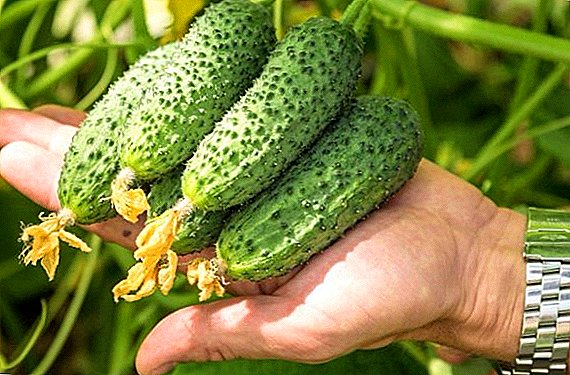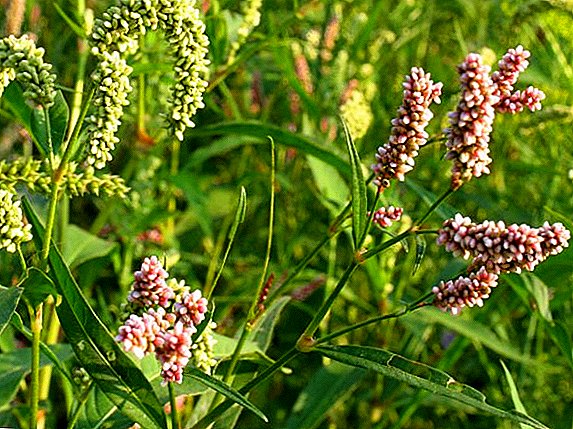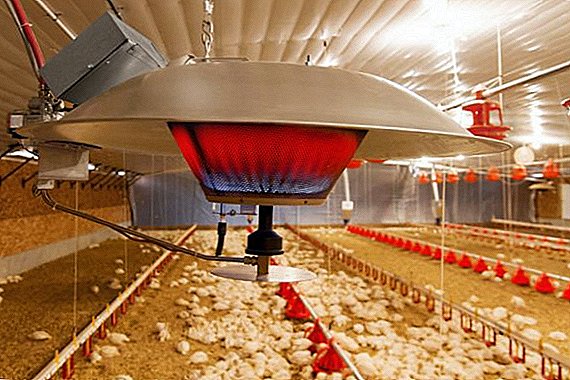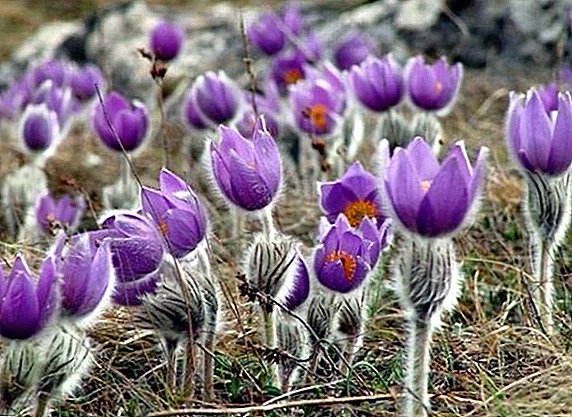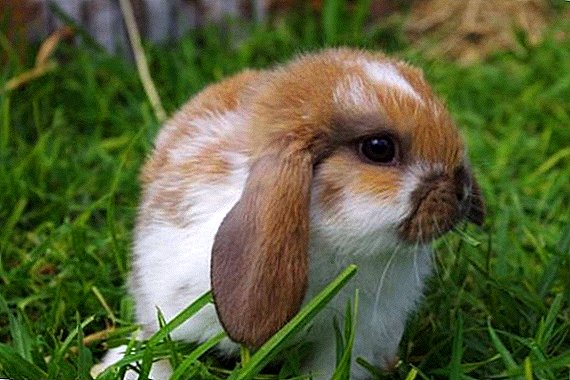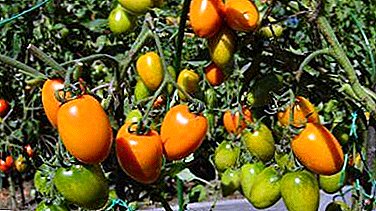
Alternantera - this is unpretentious by the standards of most flower growers plant that has colorful foliage and the ability to greatly overgrow.
With skillful distribution of species with different colors, it will provide flower bed elegance even without luxuriant and brightly flowering plants.
Caring for Alternantera at home
Alternantera is unpretentious, pleases with a full crown when growing potted culture, agitates with variegated foliage, occupying sunny areas in flower beds, near arbors or near paths.
Care after purchase
Having brought a flowerpot with a bush Alternatery home, try out the desire to move the acquired pet to the common home garden. On the stems of a beginner there may be spores of gray rot, on the foliage - whiteflies, green aphids or spider mites.
It is easier to deal with any of the illnesses on a single plant than to treat even infected green old-timers afterwards.
It is advisable to place the flowerpot in a room with windows to the south, south-west side. When dusting foliage rationally arrange the plant a light shower from warm water. When working alone, it is better to cover the ground in a pot with a plastic "curtain". Working with an assistant, it is enough to keep the pot during a shower tilted and not to direct the flow of water to the ground.
You can see the appearance of the Alternantera plant in the photo below:
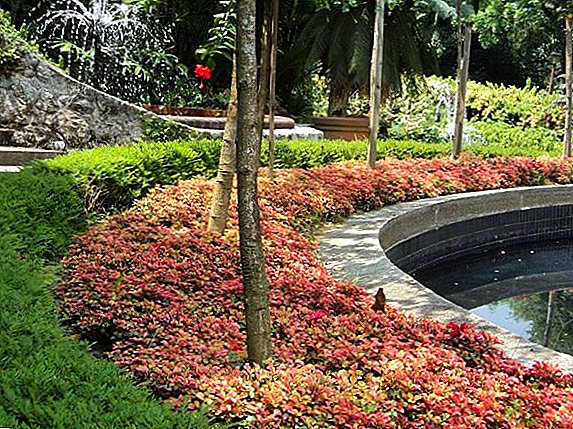
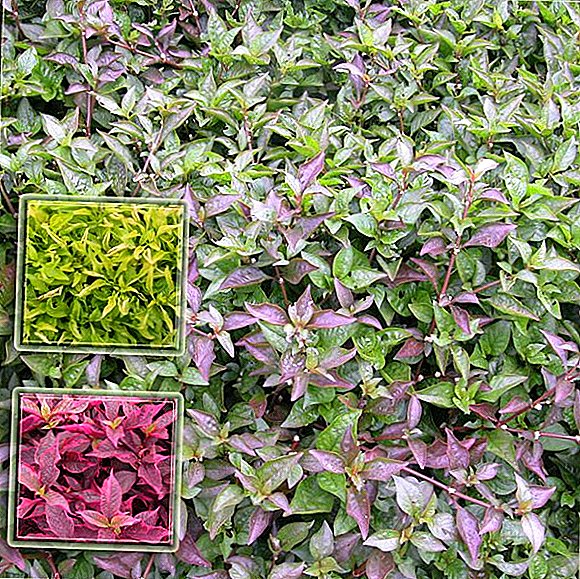
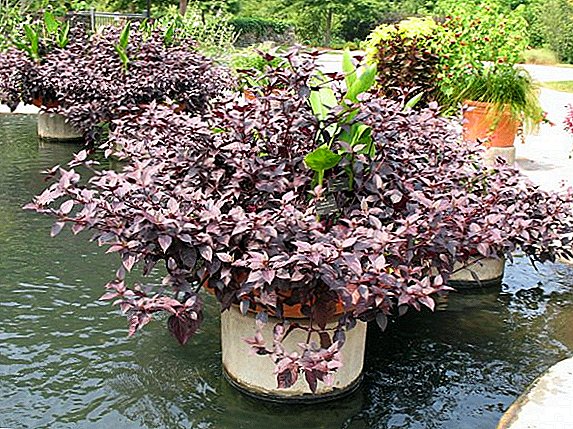
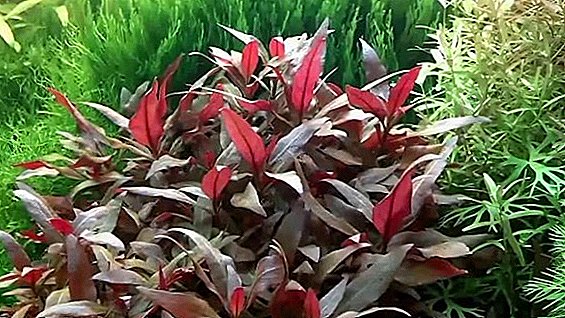

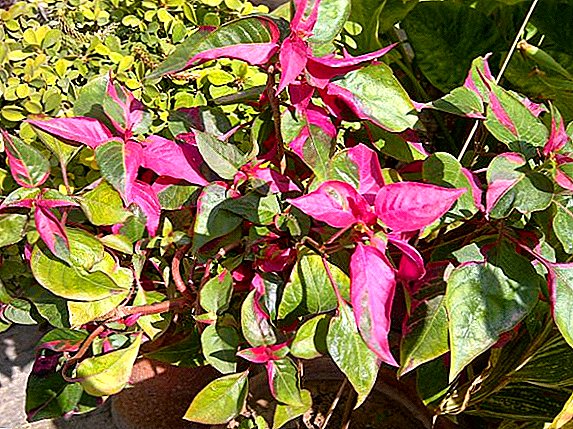
Watering
Provide a plant with moderately warm water, taking into account the warm-up and dry air. On hot days, water more abundantly, in cool and light sun, reduce the amount of water.
IMPORTANT. The soil around the plant should not crumble into dust, but moisture stagnation is unacceptable - will lead to the formation of gray mold.
Excess water is not dangerous for the species used to form flora in the aquarium environment.
Bloom
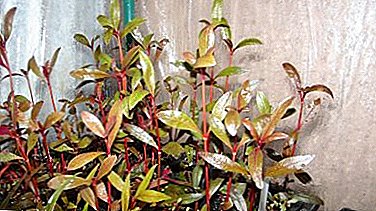 Dissolution of the buds that form spike-shaped, capitate inflorescences, does not enhance the decorativeness of the plant, since the flowers are small, inconspicuous, hiding in the leaf axils near the main stem.
Dissolution of the buds that form spike-shaped, capitate inflorescences, does not enhance the decorativeness of the plant, since the flowers are small, inconspicuous, hiding in the leaf axils near the main stem.
To the touch dry, at pot cultures are formed rarely.
Crown formation
All alternatera are ground cover plants and pruning is well tolerated. In the process of removing branches, the crown can be given a spherical, cubic shape.
Soil features
When landing on open ground, avoid:
- loamy areas;
- poor soils shaded by nearby objects.
Alternaters love soil:
- nutritious;
- moisture, breathable;
- neutral sour.
When filling the pot, use:
- greenhouse mixture enriched with humus;
- a mixture of peat with garden soil, clean sand (all in equal shares);
- turf, sand, humus, garden soil with a lot of last year's foliage (all in equal shares).
Planting and transplanting
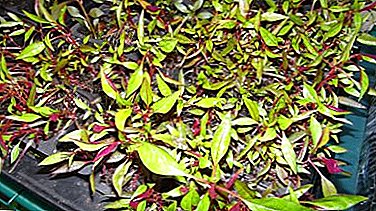 Before transplanting a plant or rooting the stalk, disinfect the pot for the pot by boiling or stinging it with boiling water.
Before transplanting a plant or rooting the stalk, disinfect the pot for the pot by boiling or stinging it with boiling water.
Alternaters grow strongly - while planting bushes in a flower bed, leave at least 8 cm between them.
Move the bushes from the flower bed to the containers or from the pot to a larger pot in a transshipment way.
Breeding
Plant bred:
- dividing an adult plant into two smaller shrubs;
- grafting.
On cuttings choose strong, healthy branches.
Algorithm procedure:
- The cut is made behind the node and free the lower part of the stem from the shoots.
- In the ground cuttings are placed somewhat before reaching the level of the first leaves left.
- The soil around the immersed end of the stem of the plant is well tamped.
- When winter grafting, saplings are covered with a polyethylene light-transmitting cover, and a nursery is placed in a lighted place.
The appearance of the cuttings indicates the success of the cutting procedure.
Growing up
Alternaters grow:
- in the flowerbed year-round as perennials, if the climate is warm and there is no frost in winter;
- on the flowerbed as one-year-olds, if, with the approach of frosts, do not transplant plants into flowerpots for placement in a heated room;
- as potted crops (with sufficient light, they retain their natural appeal);
- several plants in the pot, if they are young, and the pot is quite voluminous.
IMPORTANT. Fertilizers with reduced nitrogen content are used as top dressing. Apply twice a month from the end of February and ending August-September.
Growing temperature Alternatera:
- Winter period: lower limit 14 ° C;
- Summer period: upper limit 28 ° C.
Also, perennial herbaceous plants include: Lilian's Peperomia, Royal Begonia, Thyme (Thyme), Telefium (Ochitok), Banana, Cypress Spurge, Agave and some others.
Benefit and harm
They make it easy to give clubs even color to novice gardeners.
Harm to humans and animals is not installed.
The scientific name of Alternaters is Alternanthera.
Diseases
Gray mildew infects plants that receive excessive watering.
Methods of struggle:
- reduced watering
- elimination of severely affected areas of the plant,
- transfer to a new ground,
- maintain optimal temperature.
Pests
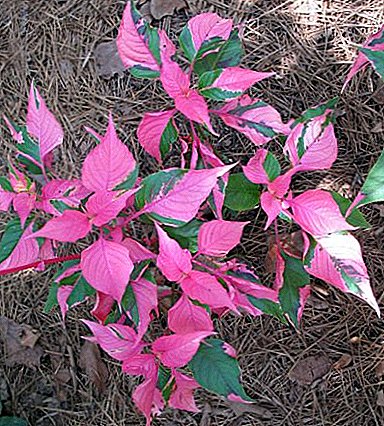 Spider mite (identified by the presence of a large number of spider webs between the leaf and stems).
Spider mite (identified by the presence of a large number of spider webs between the leaf and stems).
Methods of struggle:
- pruning affected areas;
- spraying the plants and frequent wet cleaning on the windowsill (for potted copies);
- acaricide treatment;
- spraying decoction of orange peels (preventive measure).
The whitefly (small butterflies with a white pair of wings). Control measures - insecticide treatment.
Aphid (a cluster of small insects of green color) - the foliage wither and curl, the plant ceases to grow. Control measures - insecticide treatment.
Conclusion
For the cultivation of the best specimens. Alternanters require nothing at all: enough sun, systematic watering with settled moderately warm water and timely pest prevention.




